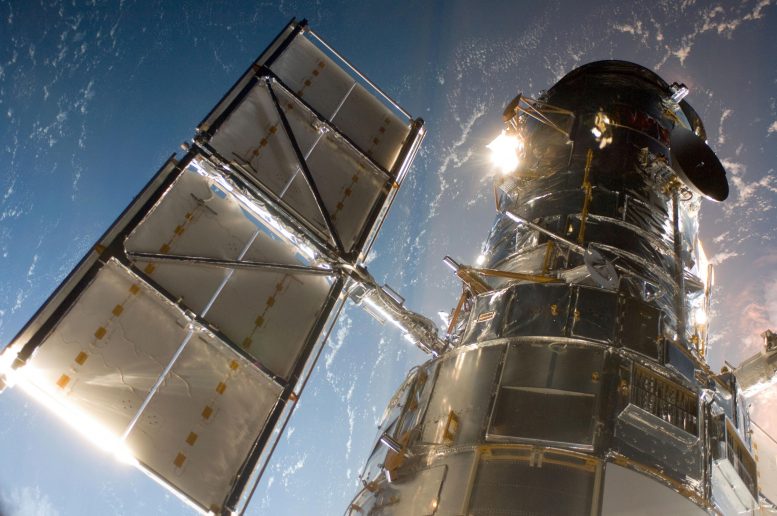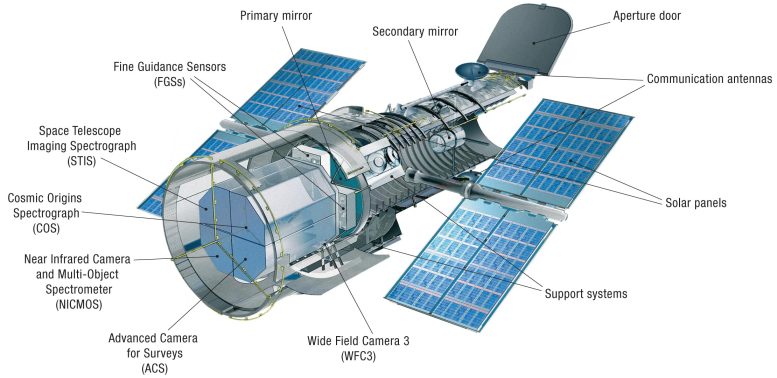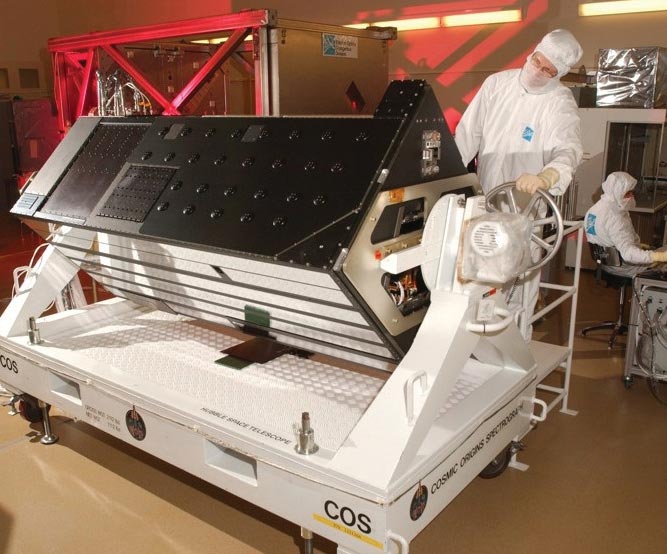
The Hubble Space Telescope was launched by the space shuttle Discovery on April 24, 1990. Avoiding distortions of the atmosphere, Hubble has an unobstructed view peering to planets, stars, and galaxies, some more than 13.4 billion light-years away. Credit: NASA
The Hubble Space Telescope team recovered the Cosmic Origins Spectrograph instrument on Sunday, November 28, moving the telescope further toward full science operations. Three of Hubble’s four active instruments are now collecting science data once again.
The team also continued work on developing and testing changes to instrument software that would allow them to conduct science operations even if they encounter several lost synchronization messages in the future. Those changes would first be installed on the Cosmic Origins Spectrograph once they’re completed and tested within a few weeks. Hubble’s other instruments would also receive similar changes. The team has not detected further synchronization message issues since monitoring began November 1.

This is a cutaway diagram of the Hubble Space Telescope, with components labeled. The forward shell houses the telescope’s optical assembly. In the middle of the telescope are the reaction wheels and the bays that house the observatory’s control electronics. The aft shroud houses the scientific instruments, gyroscopes, and star trackers. The instruments are located in containers that make them easy to remove and replace. Credit: NASA’s Goddard Space Flight Center, ESA
Cosmic Origins Spectrograph (COS)
COS focuses exclusively on ultraviolet (UV) light and is the most sensitive ultraviolet spectrograph ever, increasing Hubble’s sensitivity at least 10 times in the UV spectrum and up to 70 times when looking at extremely faint objects. It is best at observing points of light, like stars and quasars.
The Cosmic Origins Spectrograph (COS), installed during SM4 in 2009, has expanded Hubble’s spectroscopic capabilities. The instrument provides unique capabilities that are taking the telescope into exciting new discovery space.
COS studies the large-scale structure of the universe and how galaxies, stars, and planets formed and evolved, and it can help to determine how elements needed for life, such as carbon and iron, first formed.
As a spectrograph, COS doesn’t make images but instead performs spectroscopy, the science of breaking up light into its individual components. Any object that absorbs or emits light can be studied with a spectrograph to determine its characteristics such as temperature, density, chemical composition, and velocity.
A primary science objective for COS is to measure the structure and composition of the ordinary matter that is concentrated in what is known as the ‘cosmic web’: long, narrow filaments of galaxies and intergalactic gas separated by huge voids. The cosmic web is shaped by the gravity of the mysterious, underlying cold dark matter, while ordinary matter serves as a luminous tracery of the filaments. COS will use scores of faint distant quasars as ‘cosmic flashlights,’ whose beams of light have passed through the cosmic web. Absorption of this light by material in the web will reveal the characteristic spectral fingerprints of that material. This will allow Hubble observers to deduce its composition and its specific location in space.
Observations like this, covering vast distances across space and back in time, will provide information on both the large-scale structure of the universe and the progressive changes in chemical composition of matter, as the universe has grown older.










The dates are all 2021 as if all these information blocks are from this year yet they seem like old news summarized